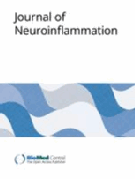
“The most frequently reported use of medical marijuana is for pain relief. However, its psychoactive component Δ9-tetrahydrocannabinol (THC) causes significant side effects. Cannabidiol (CBD) and β-caryophyllene (BCP), two other cannabis constituents, possess more benign side effect profiles and are also reported to reduce neuropathic and inflammatory pain. We evaluated the analgesic potential of CBD and BCP individually and in combination in a rat spinal cord injury (SCI) clip compression chronic pain model. Individually, both phytocannabinoids produced dose-dependent reduction in tactile and cold hypersensitivity in male and female rats with SCI. When co-administered at fixed ratios based on individual A50s, CBD and BCP produced enhanced dose-dependent reduction in allodynic responses with synergistic effects observed for cold hypersensitivity in both sexes and additive effects for tactile hypersensitivity in males. Antinociceptive effects of both individual and combined treatment were generally less robust in females than males. CBD:BCP co-administration also partially reduced morphine-seeking behavior in a conditioned place preference (CPP) test. Minimal cannabinoidergic side effects were observed with high doses of the combination. The antinociceptive effects of the CBD:BCP co-administration were not altered by either CB2 or μ-opioid receptor antagonist pretreatment but, were nearly completely blocked by CB1 antagonist AM251. Since neither CBD or BCP are thought to mediate antinociception via CB1 activity, these findings suggest a novel CB1 interactive mechanism between these two phytocannabinoids in the SCI pain state. Together, these findings suggest that CBD:BCP co-administration may provide a safe and effective treatment option for the management of chronic SCI pain.”
https://pubmed.ncbi.nlm.nih.gov/36913400/
“In conclusion, the current findings indicate that the combination of readily accessible non-psychoactive cannabis components CBD oil and BCP may be particularly effective in reducing neuropathic pain resulting from spinal cord injury. In addition, cannabinoid-like side effects were minimal using this combination. Further, the observed decrease in opioid-seeking behavior suggest that this treatment may be useful as a supplemental therapeutic to reduce opioid needed for effective pain management. Together, these findings are supportive of the beneficial effects of combining cannabis components in the armamentarium for chronic pain management.”
https://journals.plos.org/plosone/article?id=10.1371/journal.pone.0282920








